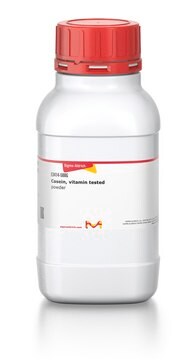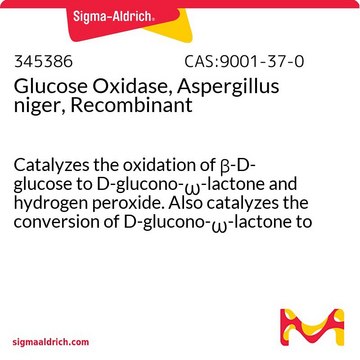MIT1000
Mitochondria/Cytosol Fractionation Kit
This Mitochondria/Cytosol Fractionation Kit provides reagents for quick & efficient isolation of intact mitochondria from cultured cells.
Sign Into View Organizational & Contract Pricing
All Photos(1)
About This Item
UNSPSC Code:
12161503
eCl@ss:
32161000
NACRES:
NA.75
Recommended Products
Quality Level
species reactivity (predicted by homology)
all
manufacturer/tradename
Chemicon®
technique(s)
cell culture | mammalian: suitable
application(s)
sample preparation
shipped in
dry ice
General description
Mitochondria, sometimes described as the “power plants” of the cell, are sites where most of the energy production in eukaryotic cells takes place. The synthesis of most of the adenosine triphosphate (ATP) occurs in these double membraned organelles that are found in living cells. ATP production by the mitochondria is done by the process of respiration, which uses oxygen to generate energy. This is a very efficient process for using food energy to make ATP. In addition to supplying cellular energy, mitochondria are involved in a range of other processes, such as signaling, cellular differentiation, cell death, as well as the control of the cell cycle and cell growth. Mitochondria also regulate crucial apoptosis signaling pathways. The number of mitochondria in a cell varies widely by organism and tissue type. Many cells have only a few mitochondria, whereas others can contain several thousand.
Millipore’s Mitochondria/Cytosol Fractionation Kit provides reagents for quick and efficient isolation of intact mitochondria from cultured cells. This kit allows mitochondrial isolation by using a convenient table top microcentrifuge, and can be used to separate an enriched mitochondrial fraction (heavy membrane fraction) from cytosolic fraction (light membrane fraction). Such separation is useful for studying apoptosis and signaling pathways between the two fractions, by Western blotting or ELISA.
The kit contains sufficient materials for the analysis of 50 samples.
Millipore’s Mitochondria/Cytosol Fractionation Kit provides reagents for quick and efficient isolation of intact mitochondria from cultured cells. This kit allows mitochondrial isolation by using a convenient table top microcentrifuge, and can be used to separate an enriched mitochondrial fraction (heavy membrane fraction) from cytosolic fraction (light membrane fraction). Such separation is useful for studying apoptosis and signaling pathways between the two fractions, by Western blotting or ELISA.
The kit contains sufficient materials for the analysis of 50 samples.
Application
Research Category
Apoptosis & Cancer
Apoptosis & Cancer
Components
Isotonic Mitochondrial Buffer (CS204255): 50 mL
Mitochondrial Lysis Buffer (CS204257): 5 mL
Protease inhibitor cocktail (CS204253): 1 mL
Anti-Bcl2 (05-729-25UG): 25 μg
Anti-GAPDH (CS204254): 25 μg
Mitochondrial Lysis Buffer (CS204257): 5 mL
Protease inhibitor cocktail (CS204253): 1 mL
Anti-Bcl2 (05-729-25UG): 25 μg
Anti-GAPDH (CS204254): 25 μg
Storage and Stability
All components should be store at -20°C for up to one year from date of receipt.
Legal Information
CHEMICON is a registered trademark of Merck KGaA, Darmstadt, Germany
Disclaimer
Unless otherwise stated in our catalog or other company documentation accompanying the product(s), our products are intended for research use only and are not to be used for any other purpose, which includes but is not limited to, unauthorized commercial uses, in vitro diagnostic uses, ex vivo or in vivo therapeutic uses or any type of consumption or application to humans or animals.
Signal Word
Warning
Hazard Statements
Precautionary Statements
Hazard Classifications
Aquatic Chronic 3 - Eye Irrit. 2 - Skin Irrit. 2
Storage Class Code
10 - Combustible liquids
Certificates of Analysis (COA)
Search for Certificates of Analysis (COA) by entering the products Lot/Batch Number. Lot and Batch Numbers can be found on a product’s label following the words ‘Lot’ or ‘Batch’.
Already Own This Product?
Find documentation for the products that you have recently purchased in the Document Library.
Simon C Baker et al.
The American journal of pathology, 186(5), 1267-1277 (2016-03-24)
Recreational abuse of ketamine has been associated with the emergence of a new bladder pain syndrome, ketamine-induced cystitis, characterized by chronic inflammation and urothelial ulceration. We investigated the direct effects of ketamine on normal human urothelium maintained in organ culture
Turki Y Alhazzazi et al.
Anticancer research, 36(1), 49-60 (2016-01-02)
The survival rate of patients with head and neck squamous cell carcinoma (HNSCC) stands at approximately 50% and this has not improved in decades. This study developed a novel sirtuin-3 (SIRT3) inhibitor (LC-0296) and examined its role in altering HNSCC
Yoshimi Endo Greer et al.
Oncotarget, 9(26), 18454-18479 (2018-05-03)
We report a novel mechanism of action of ONC201 as a mitochondria-targeting drug in cancer cells. ONC201 was originally identified as a small molecule that induces transcription of TNF-related apoptosis-inducing ligand (TRAIL) and subsequently kills cancer cells by activating TRAIL
Pedro Escoll et al.
Cell host & microbe, 22(3), 302-316 (2017-09-05)
The intracellular bacteria Legionella pneumophila encodes a type IV secretion system (T4SS) that injects effector proteins into macrophages in order to establish and replicate within the Legionella-containing vacuole (LCV). Once generated, the LCV interacts with mitochondria through unclear mechanisms. We
Kui Wang et al.
Autophagy, 7(9), 966-978 (2011-05-26)
Quercetin, a dietary antioxidant present in fruits and vegetables, is a promising cancer chemopreventive agent that inhibits tumor promotion by inducing cell cycle arrest and promoting apoptotic cell death. In this study, we examined the biological activities of quercetin against
Our team of scientists has experience in all areas of research including Life Science, Material Science, Chemical Synthesis, Chromatography, Analytical and many others.
Contact Technical Service







